Agüimes Historical Center
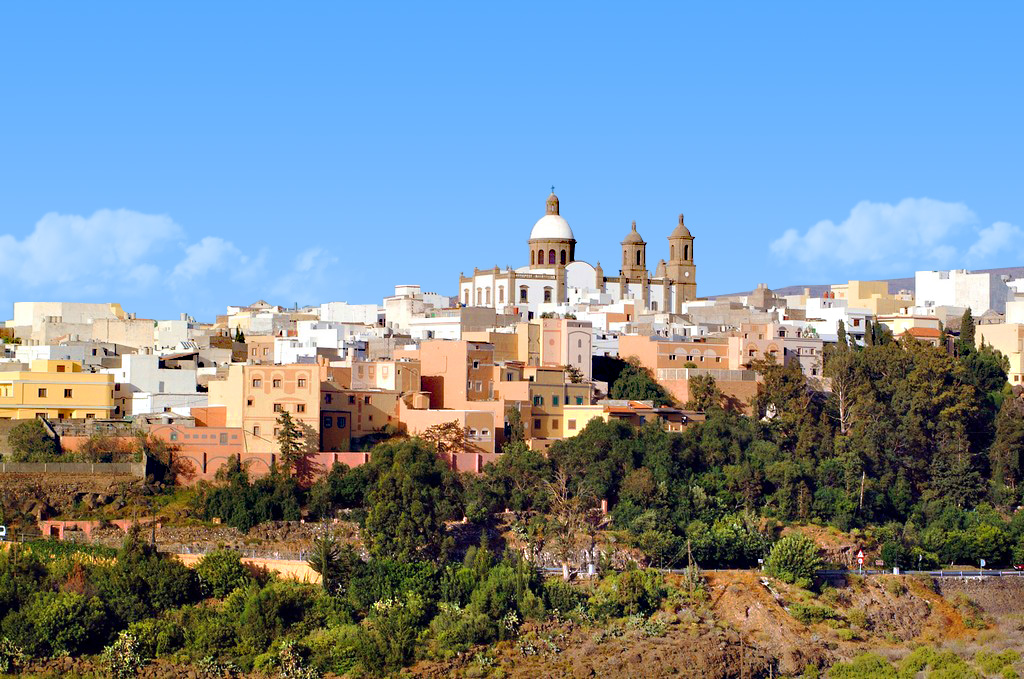
The Historical Center of Agüimes invites you to stroll through its streets and its beautiful squares; discover its hidden spots and the many sculptures that speak about the essence and traditions of the place.
To begin with, we suggest you visit the Interpretation Center at the Historical site. This is located sameplace as the old Hermitage of San Antonio Abad, it was built in the mid-sixteenth century. This site will show the visitor its urban evolution from prehistoric times to present day; through construction techniques and materials, diverse ornamental and architechtural elements, some very traditional buildings and its craftsmen who made them possible. We can also observe the archaeological remains of a pre-Hispanic enclave to which the hermitage of San Antonio Abad is superimposed.
By the access to this building, we can delight at the sculpture 'Princesa Catalina Hernández de Guanarteme', translated literally as 'Princess Catalina of Guanarteme'. She was a princess aborigine, daughter of Fernando Guanarteme, the last aboriginal king of Gran Canaria, who lived and died in Agüimes at the beginning of the 16th century.
Continuing, we suggest heading up Sol street located just behind the Historical Center. Next to building number 5 we should find the old Casa de Don Higinio Melian, a political facility from the 18th century, which now is an Equality Center. A few meters above it is the Villa de Agüimes hotel, a former multipurpose establishment. In the past, this building has been the 'House of the Doctor', a dungeon and the seat of the Town Hall.
Soon we will be in the square dedicated to the Agüimes writer, Orlando Hernández Martín. You should see the sculpture "Homage to Music" through which classical music can be heard at different times of the day.
You can also already see one side of the Neoclassical Temple of San Sebastián, declared a National Artistic Historical Monument in 1981. At the top of the facade there is an image in San Sebastián Marble. Its interior houses images of artists such as Luján Pérez (the most important Canarian imager), Martín de Andujar, Lorenzo de Campos and the Seville School and others.
The square of Ntra. Sra. Del Rosario is just in front of the church.
Agüimes' devotion to Virgin Rosario comes from the year 1645 when she was declared protector against the invasion of a locust plague.
Around this area, there are several sculptures that we suggest you discover, such as that of “Mariquita Sánchez”, the bust of Juan Melián Alvarado, benefactor of the town, 'Monumento a la Tertulia', (translated as: Monument to chatter), the “Homage to the Ancient Carnival” and the “Donkey with saddle”.
Leaving Plaza del Rosario and taking the sculpture of the “Donkey with Albarda” as reference, we should continue to the right, entering the neighborhood of Santo Domingo, where the hermitage of Nuestra Señora de las Nieves was located in the 16th century. A century later the convent of Santo Domingo rose, opposite the square of Santo Domingo.
This Church-Hermitage and Convent ended up being pastured by the flames in a fire that occurred on July 3rd, 1887.
We suggest you continue from the Plaza de Santo Domingo to the Antonio Vicente González street indicated by his own sculpture and the house where he was born; then we can take the Guayadeque alley to the end from where much of the Barranco de Guayadeque, or Guayadeque ravine, can be seen.
We return to the Plaza del Rosario but this time taking Morales Viera and Alejandro Hidalgo streets. From here the Roque Aguayro Natural Monument stands out in the background.
From Plaza del Rosario we should continue along Progreso street where we will be able to see the hotel Casa de los Camellos, formerly a building for agricultural work.
Again in Progreso street we can take a look at the sculptures of the alleys La Vegueta "El Camello" and El Reloj "Tribute to lovers", and then continue and reach the Parque de los Moros where the Episcopal Palace is located, which houses through several of its rooms, the Agüimes History Museum
Guayadeque Museum
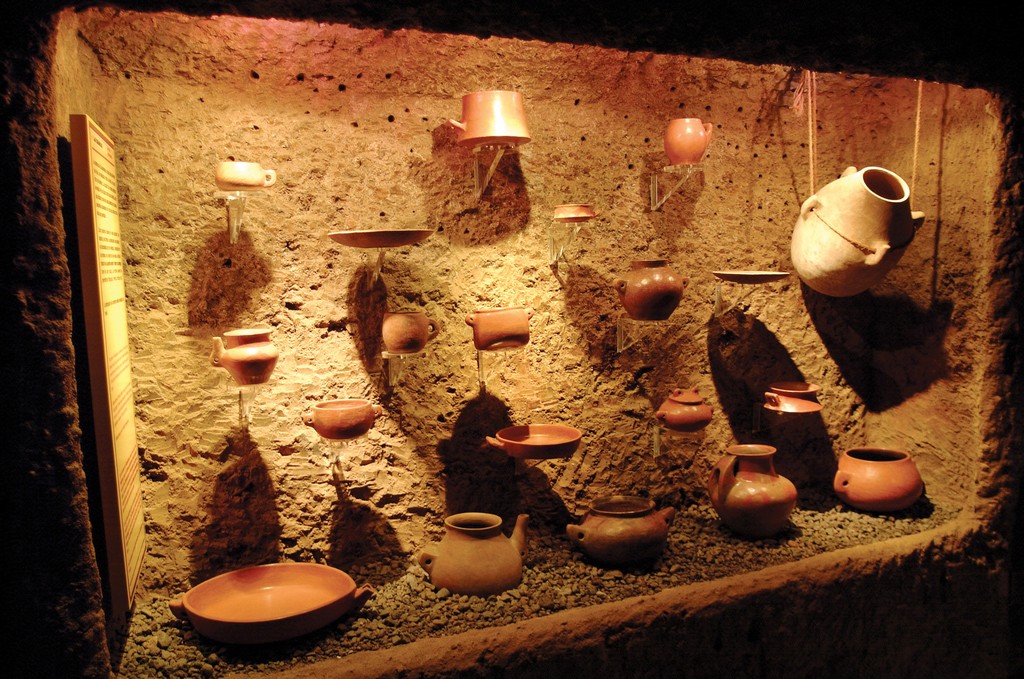
The Guayadeque ravine is located between the municipalities of Agüimes and Ingenio, east of the island of Gran Canaria. Access to the site is via road from either town, both lead to the small nucleus of 'Montaña de Las Tierras', located inside the ravine. It is here where the asphalt road ends after having crossed the troglodyte town of 'Cueva Bermeja'.
The unique environmental and antique value that this impressive space contains have contributed to its declaration as a Natural Monument by the Law of Natural Spaces of the Canary Islands; and also as a Property of Cultural Interest, under the category of Archaeological Zone.
The survival of these natural and cultural values has been made possible by the isolation to which this space has been subjected to until relatively recently. This evolution of events has allowed maintenance of secular practices and other traditions that had already disappeared in other parts of the island.
Its journey is of roughly twenty kilometers, unfolding from the foothills of the 'Los Marteles' caldera to the vicinity of El Burrero beach. The water that flows trough it has excavated a channel that, in its middle course, forms almost vertical walls. A considerable number of endemic plants of the Canary Islands have grown in this area, near the flow. The botanical and fauna diversity is favored by the altitudinal and climatic variety held along the edges of the ravine. All the way from its headwaters in the summit area, to its mouth on the coast, passing through the areas of midlands.
The water has helped shape the stone and land. It has historically been, and continues to be today, one of the defining elements of the landscape and of the ravine's ways of life. The different springs have not only favored the development of the vegetation but have made it possible to have sufficient flow for the cultivation in adjacent lands and for the supply of nearby populations.
This natural space has seen human activity in dates that go back to the Pre-Hispanic Era, of which we have multiple testimonies. The archaeological importance of Guayadeque began to be recognized in the last decades of the 19th century, when the first explorations began to be made by the Canary Museum.
The mummies, the great burial caves, are the most recognized archaeological elements of the ravine, but they are not the only ones. Modern archeology, in addition to delving into anthropological and funerary aspects, has highlighted the presence of other equally as significant elements, such as large troglodyte settlements, granaries, paintings and cave engravings.
The documentation after the Conquest only refers to Guayadeque almost exclusively in relation to the use of its waters, both for supply and irrigation, and to move around the machinery of the different mills that have marked its course until today.
The environmental resources of Guayadeque are represented and displayed in the Interpretation Center, a building excavated on Guayadeque’s slopes, following the troglodyte traditional architecture of the area. In this center you can go on a journey, from a remote past in which erosion and volcanic activity was forming the landscape, through the aboriginal occupation and subsequent colonization, to modern times.
De martes a domingo
09:00 a 17:00h
San Sebastián Church
The current Parish Church is the third Parsh Church in Agüimes. The first one's construction is dated late XV century to 1527. The second one was built in 1534, until the end of the XIX century.
Its construction was decided according to the architect's plans, Diego Nicolás Eduardo (1787). It was built in three phases: Firstly 1796-1837. Secondly from 1876 to 1888 and lastly from 1920 to 1940. On December 30, 1995, the marble image of San Sebastián, by D. Luis Alemán Montúll, was placed in the exterior niche.


Engravings of Balos
Without a doubt, one of the most outstanding features of the archaeological heritage of this south-eastern part of the island is the concentration of rock 'manifestations'. The engraving sites are diverse, they can all be found in Tirajana, Temisas and Agüimes, presenting a series of features that are clearly unique and different from other engravings in the island. Be it due to the abundance, location or motifs. But it is undoubtedly the site of Los Letreros, at the confluence of the Temisas ravine, together with Balos, that one can find the most important set of rock carvings in Gran Canaria.
Señorío Winery of Agüimes
This was an old store that has been converted into a Municipal Winery where wine and oil are made. Inaugurated in May 2003, the building is located in the southern access of the Casco de Agüimes, on a hill with exceptional views over the 'Llanos de Arinaga'.
The construction responds to the prevailing popular typology on the island. It is built with Agüimes stonework walls and a flat wooden roof. The main body of the winery has two floors (ground floor and basement) and has a space for the production and storage of the grapes, the cellar, laboratory, multipurpose room, room where the mill is located for the production of oil "Caserío de Temisas" . In the same building there is a restaurant and a small shop for artisan and gastronomic products from the area.
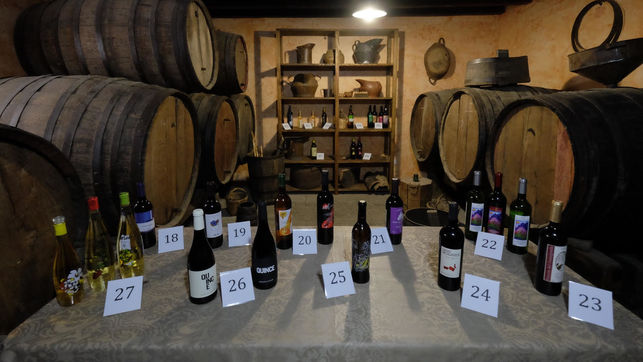
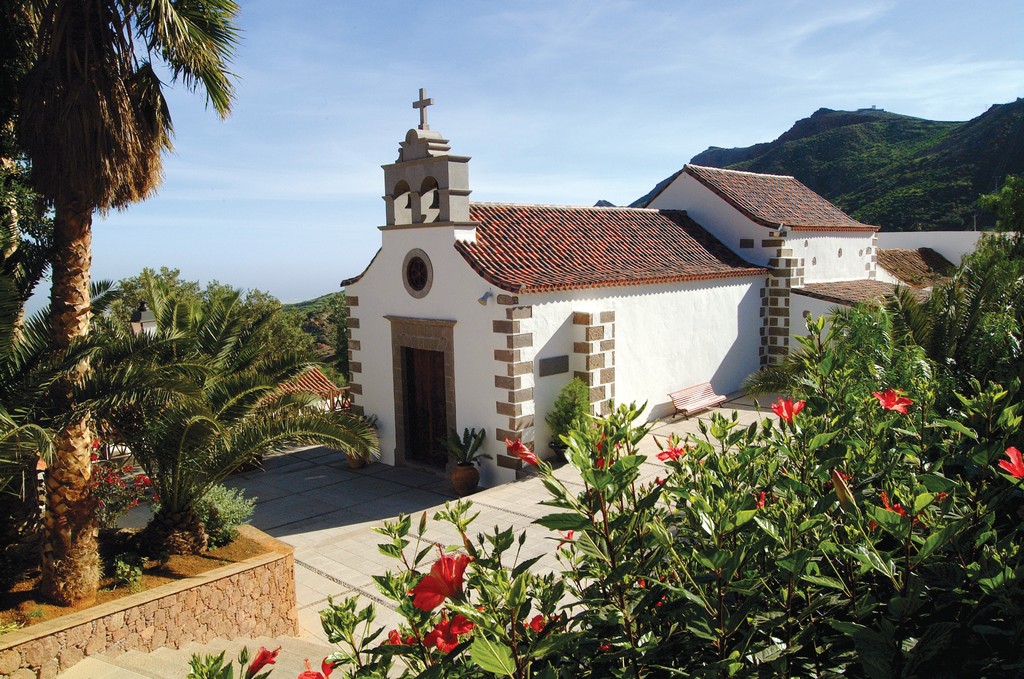
Temisas village
On top of the municipality of Agüimes in the middle of the mountains is the Temisas valley, made up of the urban nucleus of San Miguel, 'Corazón de Jesús' and 'la Inmaculada'. They stand at a good 650 meters high.
Temisas keeps an architectural unit with beautiful integration with the landscape that surrounds it, forming a series of small concentrated farmhouses. The Temisas house is a clear example of popular Canarian architecture, with great compositional simplicity, rectangular floors, load-bearing walls, gabled roofs. Dwellings on the ground floor predominate, with an example of two floors.
In this neighborhood of Temisas is the hermitage of San Miguel built in 1730, it was built by people who were encouraged by a dominican man who was stationed there at the time. They sculpted and gave the hermitage the image of the patron Saint Michael the Archangel.
Temisas Astronomic Observatory
The Temisas Astronomical Observatory has become a cultural benchmark for the teaching, dissemination and study of Astronomy not only in the Villa de Agüimes and the Southeast Region of Gran Canaria, but for the entire island. We are counting with the collaboration of amateurs, professionals and people interested in Astronomy, Astrophysics and some of the essential related sciences, such as Mathematics, Physics, Chemistry, Geology, Biology, etc., as well as other branches and disciplines that can range from History and Archeology, up to Astronautics, passing through Telecommunications, Informatics and Photography. All this at different levels of skill, and in an informative, educational and scientific way.
Contacto: www.astrotemisas.com


Arinaga's lighthouse
The arinaga lighthouse is located between Cabrón beach and Arinaga beach. The old lighthouse of Arinaga is one of the few examples of Canarian lighthouse architecture from the late 19th century that remains standing in the archipelago, with an excellent location and an environment of great beauty.
The main interest of this building is in its historical value, since it was a project of renowned engineer 'León y Castillo'. It has a classic eclectic style, and an important role in the landscape of the municipal coastline. Its location in an exposed area, with no other buildings nearby, gives it a unique touch that makes it part of the essence of this place. The building and its surroundings are located in the natural area of the Montaña de Arinaga, and therefore subject to the protection regulations established by the Law on Spatial Planning and Natural Spaces of the Canary Islands. Inside there is a restaurant.
'Risco Verde' Lime Museum
The 'Risco Verde' Lime Museum, located on the Arinaga promenade, could be described as a set of old furnaces or kilns. They constitute an interesting commitment to the dissemination of artisan-industrial activity, describing the process of obtaining lime from the limestone located in the vicinity of the place.
Lime played a fundamental role in a myriad of elements: the preparation of mortars with which to fix construction elements; for lime covers; for waterproofing; and fundamentally for the application of continuous whitewash covering the walls.
To obtain the lime, the limestone is introduced into the kiln, occupying practically the entire cavity. Once the firewood is lit, the lime kiln has to take care of the fire remaining lit and with an ideal temperature (900-1000ºC).
The municipality's coast, especially the Arinaga area, is rich in limestone or calcareous stones (known in spanish as 'caliche').
The inhabitants of Agüimes, throughout the centuries, obtained from this place the necessary lime for their constructions.
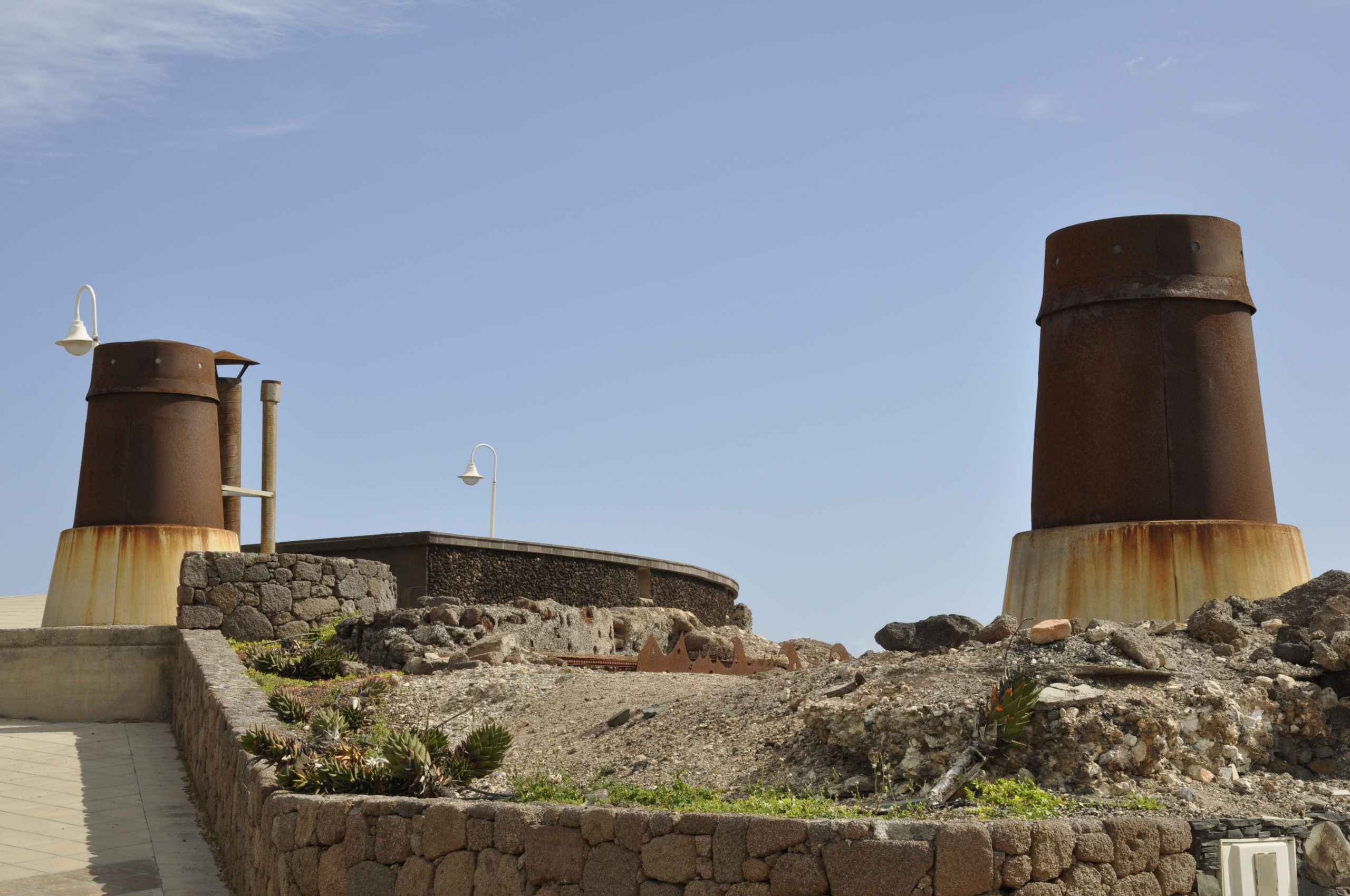
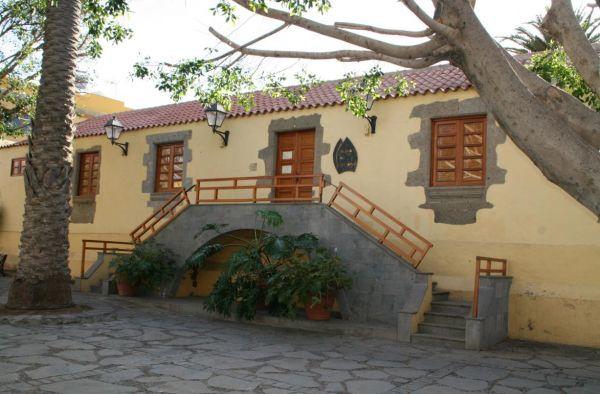
Agüimes History Museum
The Agüimes History Museum allows its visitors to learn five centuries worth of history from the region. It ranges from the establishment of the episcopal lordship, the root of the Spanish conquest of the island, until mid 20th century.
The museum is located in a building that belongs to the Verdugo family, one of our members, Don Manuel Verdugo y Albiturría, was the last Bishop-Lord of Agüimes. For what this building is known as the Episcopal Palace. In 1941 and until 1948, this building was occupied by military corps from the old Spanish protectorate of Morocco. They feared a possible invasion by one of the major axes in World War II. The presence of this army left its mark not only in the social life of the town, but also in the episcopal palace and its surroundings. It's reflected in it's surroundings such as the park located at the main entrance known as the 'Parque de los Moros', translated literally as 'North Africans Park'. Also during this occupation, a staircase was designed and built and a window was transformed into a door, thus connecting the palace with the park.
Address : C / Juan Alvarado y Saz nº 42 (Agüimes)
Telephone : 928 785453
Hours : Tuesday to Sunday from 9:00 a.m. to 5:00 p.m.
